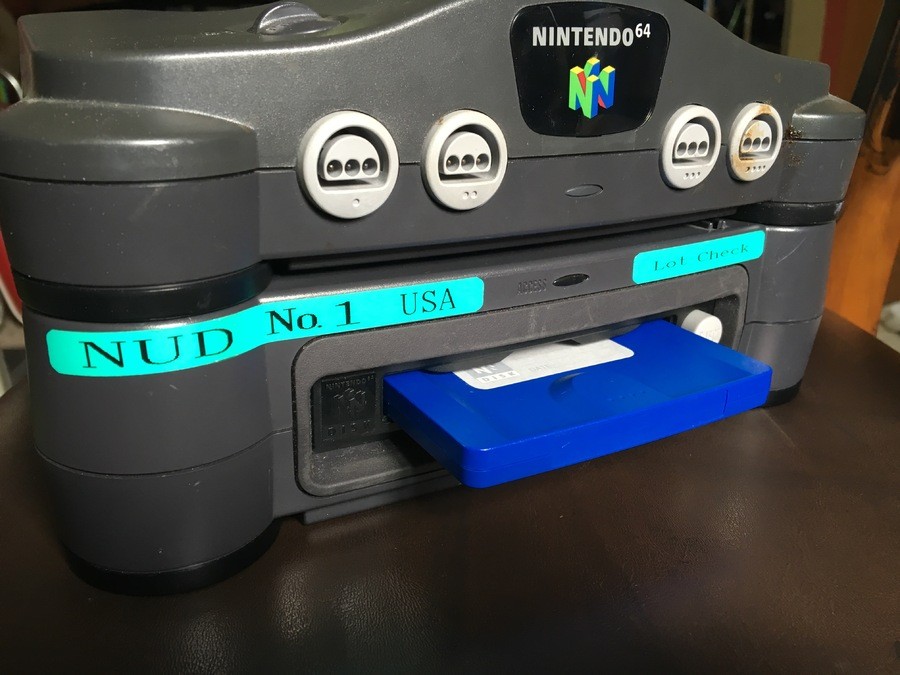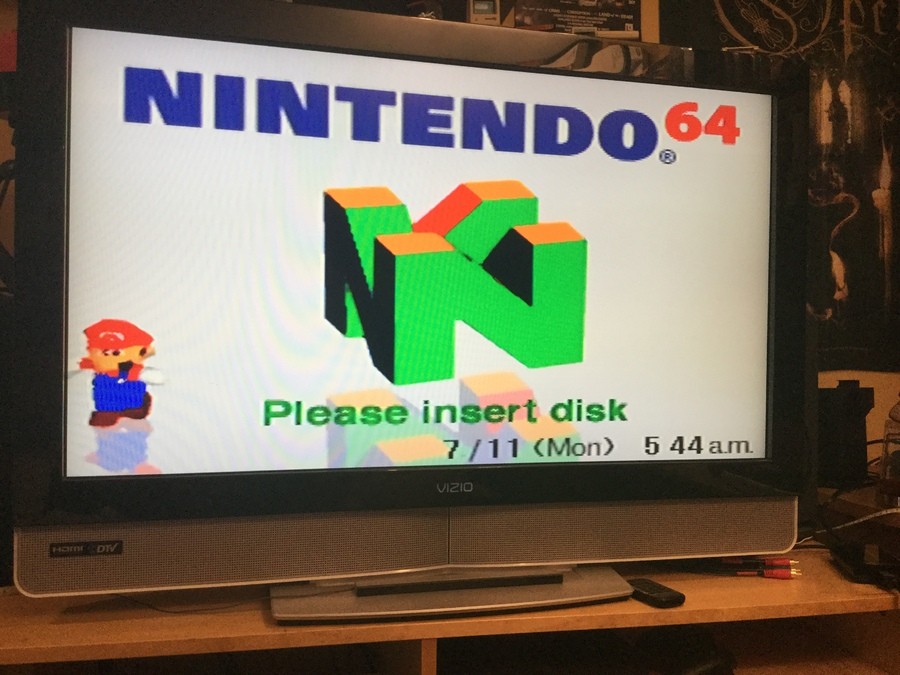Nintendo's rich history has some intriguing side-stories, systems that had limited releases and become topics of huge interest for enthusiasts and collectors. The Nintendo 64DD is one such example - a disc drive bolt-on for the Nintendo 64, it was a sizeable technological expansion for the system that flopped in Japan, with that poor performance ultimately scuppering a release in the West.
Yet Jason Lindsey, well known as Metal Jesus Rocks on YouTube, appears to have acquired a US unit of the 64DD, something that seems to be a new discovery to the online community.
Lindsey posted multiple images on Assembler Games seeking advice and expertise from the forum users, as he's confirmed that he's planning to produce a video on the unit. The pictured blue disc, notably, doesn't actually work in the unit, potentially due to it being a development cartridge; the key to this unit is that it seems to be a test / retail build, not a dev kit.


It appears to be a legitimate example of a US unit that was likely in place for the purposes of demonstrations and Nintendo's Lotcheck testing process (the latter is obvious with a related sticker). Ars Tecnica states its verified its authenticity, and quotes former Nintendo support specialist Mark Deloura as saying the following, recalling his time at Nintendo of America working with DD units.
You couldn't boot into the DD units hooked up for development. That is a sign of it being a retail unit, or at least 'retail-ish.' My recollection is that the development DD wouldn't boot at all.
I wish I'd kept my DD so I could be more definitive about it!
At one point I had an early version of the Ocarina [of Time] codebase [for the DD] from Japan and wrote the code to get it to work properly on the cartridge. I had to do some special things since it was so freakin' big.
In addition to having hold of a US demonstration / testing unit that conceivably represents a version of the retail build that never was, there's anticipation around the blue disc that doesn't actually work on the unit; the dream, of course, is that it contains something new that we haven't see before.
It'll certainly be worth tracking Lindsey's channel on YouTube - he'll no doubt be sharing his findings in a video once he makes a breakthrough in his research.
[Update: To go into first person, I've just realised as of 23:30 UK time on the publication date, this is covering the same topic as a previous article written between time zones. I've kept both live as they include different approaches, but apologies for the duplication]
[source assemblergames.com, via arstechnica.com]





Comments 7
exciting! would be amazing if he does get to find out whats on the blue disk! and if its something we haven't seen yet....even more exciting!!!
Couldn't this be merged with the original article?
Well, that's a rather amazing find! I wonder what's on that disk?...If it's Earthbound 64, I'm gonna completely lose it.
Awesome! Can't wait to hear more about this little gem stone!
A local shop had a DD for sale years ago, I assume it was a dev unit. I couldn't stomach the $200 asking price at the time, but boy I wish i had now.
amazing
Metal jesus rocks. The man with no tan.
Tap here to load 7 comments
Leave A Comment
Hold on there, you need to login to post a comment...